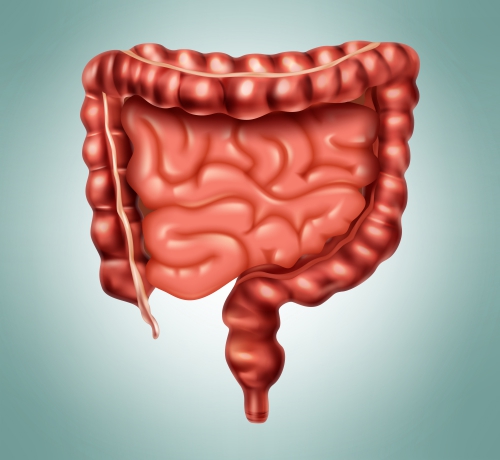What is aortic dissection?
Aortic dissection is a condition in which the inner layer of your aorta- the largest blood vessel in the body which branch off your heart- tears. Blood vessels are made up of 3 layers and when the inner layer is torn, blood enters through this tear to accumulate between the middle and inner layer which will affect blood flow through this blood vessel. The separation of the inner and middle layer is known as dissection and usually propagates as the condition worsens. This condition is life-threatening and is fatal if the blood vessel ruptures.
Aortic dissection is an uncommon disease in the United States and the true frequency of the condition is difficult to estimate as most of these estimates are based on autopsy reports. In addition, this condition is more common in blacks than in whites. Furthermore, males are more at risk of developing the condition than females. People aged between 50-65 years are at increased risk of developing aortic dissection.
What are the causes and risk factors for aortic dissection?
There are several factors which may increase your risk of developing aortic dissection and these include:
- Age: People aged between 50-65 years are at increased risk of developing aortic dissection.
- Sex: Males are more at risk of developing the condition than females.
- Race: Aortic dissection is more common in blacks than in whites.
- Hypertension: Suffering from uncontrolled high blood pressure increases your risk of having aortic dissection.
- Coarctation of the aorta: This condition is when you are born with a narrowed aorta which will increase your risk of developing aortic dissection.
- Atherosclerosis: Atherosclerosis is a disease in which plaques made up of mainly fats and cholesterol build up inside of your arteries which hardens and narrow your arteries.
- Aortic aneurysm: An Aortic aneurysm is when your aorta is weakened which results an artery wall that bulges and this increases your risk of developing aortic dissection.
- Cocaine use: Cocaine use has been associated with an increased risk of developing artic dissection as the drug causes your blood pressure to raise temporarily.
- Pregnancy
- Strenuous exercise: Strenuous exercise training may increase your risk of developing aortic dissection as during the activity your blood pressure increases which may damage the inner lining of your aorta.
- Genetic diseases: Genetic diseases such as Marfan syndrome and Turner syndrome amongst others have been associated with an increased risk of developing aortic dissection.

What are the signs and symptoms of aortic dissection?
The signs and symptoms of aortic dissection include:
- Sudden severe chest pain which can be described as a ripping, tearing or shearing sensation which radiates to the neck or lower back.
- Loss of consciousness.
- Severe abrupt abdominal pain.
- Difficulty breathing.
- A weaker pulse in one arm or thigh compared to the other.
- Symptoms similar to a stroke such as difficulty speaking, loss of vision, paralysis or weakness on one side of the body.
- Neck or jaw pain.
- Coughing of blood (haemoptysis).
- Fever.
- Severe anxiety and premonitions of death.
- Heart murmur or bruits.


Making a diagnosis
To make a diagnosis, your doctor will first take a detailed history from you to know more about your symptoms. After the history taking, your doctor will perform a thorough physical examination to look for signs of aortic dissection. To confirm the diagnosis, your doctor will order some tests and these include:
- Complete blood count (CBC): A CBC is done to assess the level of haemoglobin as a low haemoglobin level may indicate the presence of a leaking or ruptured aortic dissection.
- Blood urea nitrogen (BUN) level: A BUN level is done to determine whether the renal arteries are affected by the aortic dissection which will be indicated by an elevated BUN level.
- Myocardial muscle creatinine kinase enzyme, troponin I & T and myoglobin: If these levels are elevated, it may indicated that thee aortic dissection has affected the coronary arteries and caused a myocardial ischaemia- this occurs when there in a reduced amount of blood reaching the heart muscles- which may lead to a heart attack (myocardial infarction).
- Chest x-ray: A chest x-ray is not very accurate to diagnose aortic dissection but can be used to rule out other conditions. The classic finding is a widened chest cavity (mediastinum) or blood around your lungs if the aortic dissection is ruptured.
- Transesophageal echocardiogram (TEE): This test uses sound waves to produce images of the heart. It involves your doctor inserting the probe into your esophagus (the tube carrying food from your mouth to your stomach) through your mouth in order to place the ultrasound probe as close as possible to your aorta. This way a more accurate ultrasound scan is obtained compared to the regular ultrasound scan.
- Computed Tomography (CT) scan with contrast: A CT scan of the chest is done to assess the aorta and the severity of the condition. It provides anatomical detail about your aorta and the extent of the dissection. The contrast is inserted into your bloodstream to make your heart, aorta and other blood vessels more visible on the CT pictures. However, this test is not suitable for people whose condition is not stable.
- Magnetic Resonance Angiogram (MRA): This test uses a magnetic field and pulses of radio waves to produce pictures of your heart and aorta. It does not involve the use of any contrast medium and ionizing radiation and therefore more useful for people who are allergic to the contrast medium or suffer from renal failure.


What are the treatments of aortic dissection?
Aortic dissection is a medical emergency which requires immediate medical attention. The main treatment include medications or surgery.
Medications include beta blockers and nitroprusside which make your heart beat slower and with less force to reduce your blood pressure. This prevents the aortic dissection to worsen. However, medications alone may not be enough to treat the dissection and depends on the type and severity of the condition.
The surgical procedure is aimed at removing the dissected aorta to be replaced by a synthetic tube (graft). The surgical procedure may be done as open surgery which involves your doctor making an incision on your chest to reach the blood vessel or by a technique called endovascular repair which involves your doctor passing the wires and stents through your arteries to reach your aorta. The type of surgery done depends on the location and severity of the dissection.
What are the complications of aortic dissection?
If aortic dissection is left untreated, the following complications may ensue:
- Death as a result of a ruptured aortic dissection (internal bleeding).
- Stroke.
- Heart attack.
- Kidney failure.
- Life-threatening intestinal damage due to poor blood flow.
- Aortic valve damage (aortic regurgitation).
- Accumulation of blood around the heart due to a ruptured aortic dissection which will prevent your heart beating normally and this condition is known as cardiac tamponade.

Expectations (prognosis)
Unfortunately, the mortality rate for aortic dissection ranges from 10-30% depending on the type and severity of the condition. If the dissection occurs within 2 weeks (acute aortic dissection), the prognosis is usually poor. However, if it development over the course of more than 2 weeks (chronic aortic dissection) the prognosis is better.

Source:
J. Alastair, I. and Simon, M., 2016. Davidson's Essentials of Medicine. 2nd ed. London: ELSEVIER.
Parveen, K. and Michael, C., 2017. Kumar & Clarks Clinical Medicine. 9th ed. The Netherlands: ELSEVIER.
Mancini, M., 2020. Aortic dissection.
Patel PD, Arora RR. Pathophysiology, diagnosis, and management of aortic dissection. Ther Adv Cardiovasc Dis. 2008 Dec. 2 (6):439-68.
Braverman AC, Schermerhorn M. Diseases of the aorta. Zipes DP, Libby P, Bonow RO, Mann DL, Tomaselli GF, Braunwald E, eds. Braunwald's Heart Disease: A Textbook of Cardiovascular Medicine. 11th ed. Philadelphia: Elsevier; 2019. Vol 2: Chap 63.
Redington AN, Smallhorn JF, Therrien J, Webb GD. Congenital heart disease in the adult and pediatric patient. Zipes DP, Libby P, Bonow RO, Mann DL, Tomaselli GF, Braunwald E, eds. Braunwald's Heart Disease: A Textbook of Cardiovascular Medicine. 11th ed. Philadelphia: Elsevier; 2019. Vol 2: Chap 75.







